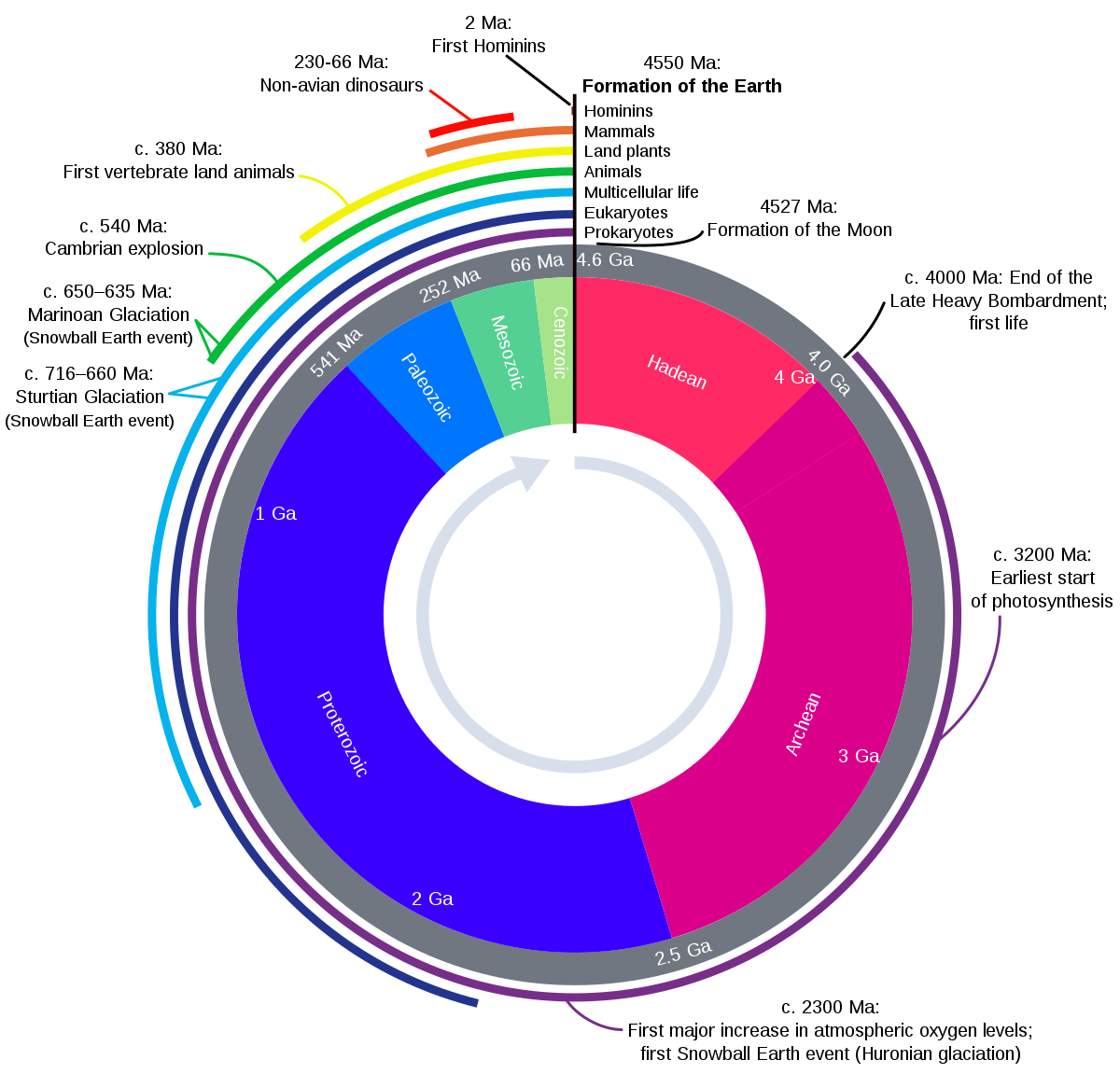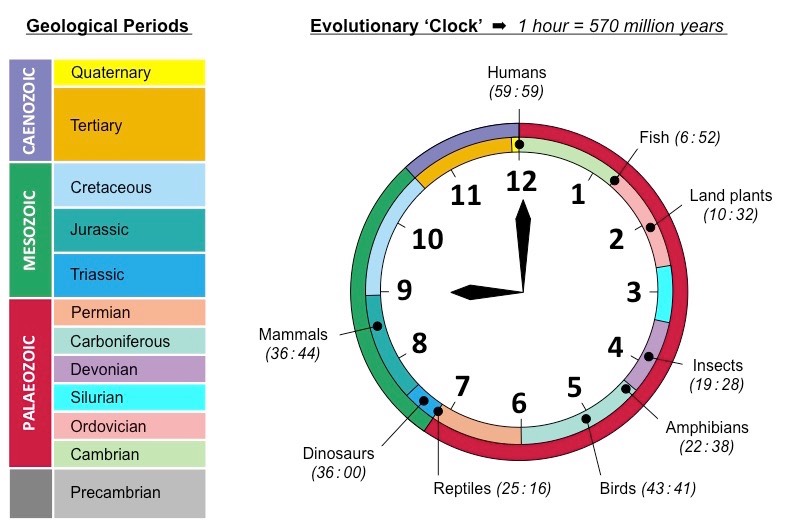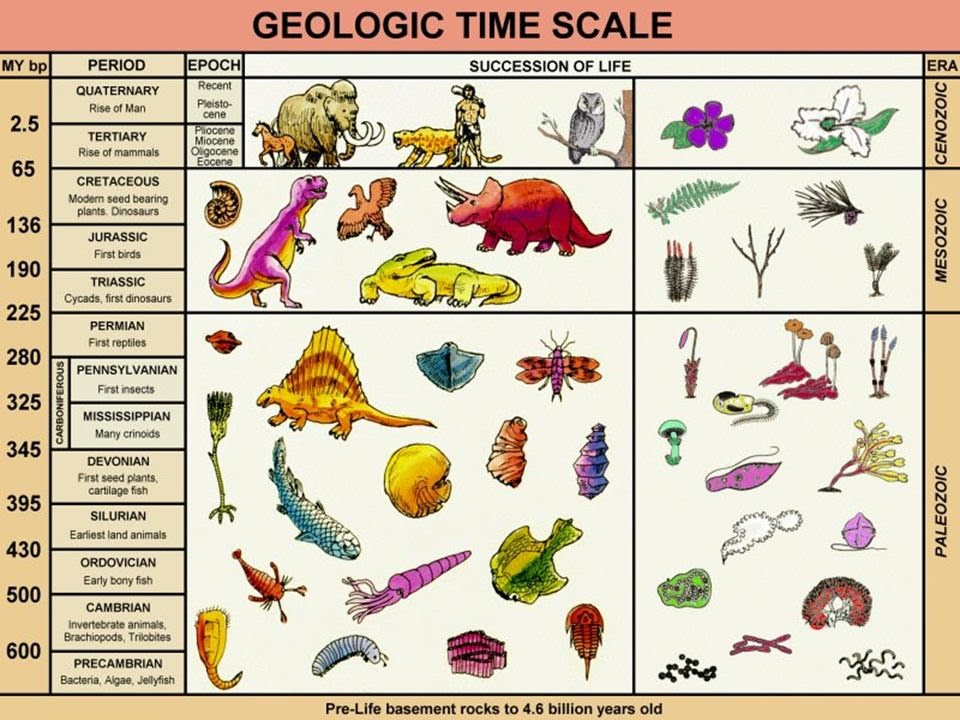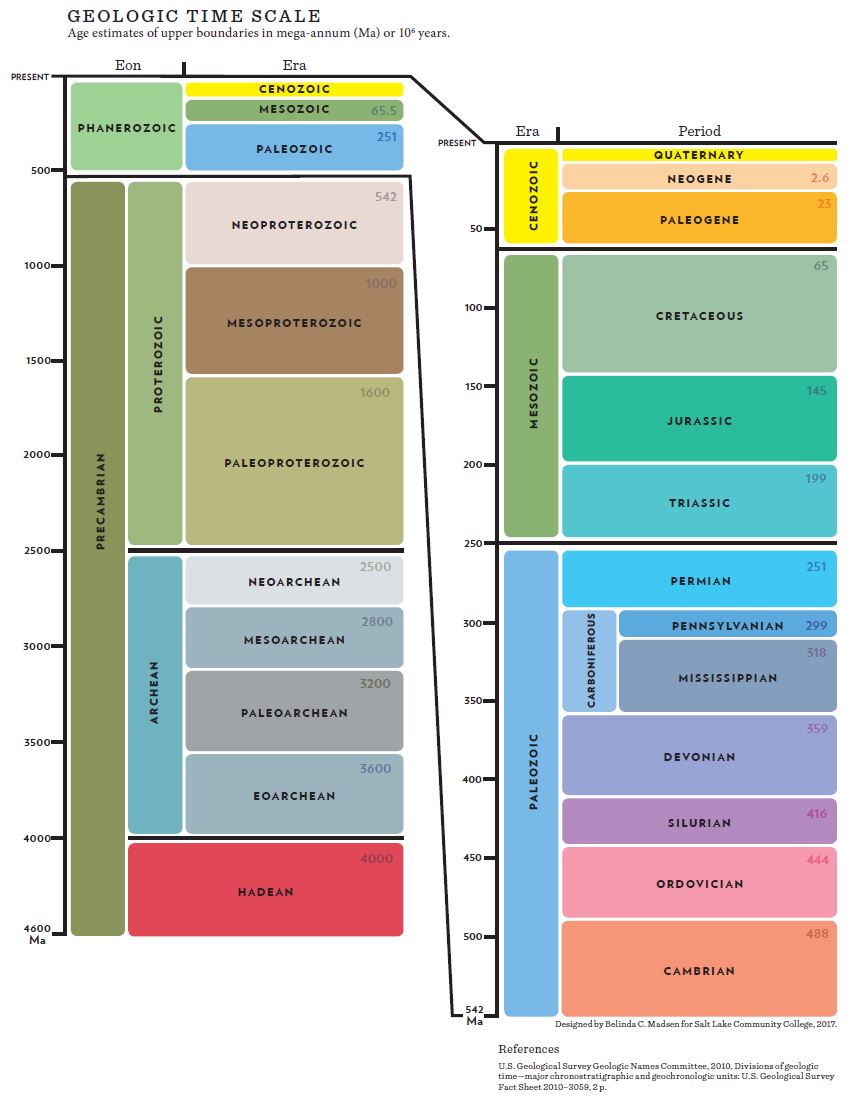8 The Geologic Time Scale
The timescale is used by geologists as a framework for earth’s history.
Its sequence of rocks and fossils and the events they record, was largely established during the 1800s using Steno’s principles of relative geologic age, Smith’s principle of faunal succession, and the theory of unconformities by Hutton and others.
The names of some of the periods, such as Jurassic period and Cambrian period, are familiar even to many non-geologists.
This geologic time scale was assembled entirely on the basis of relative geologic ages, without knowing the absolute ages of any of the events, eons, or periods.
The types of fossils that occur in the rocks are the main criterion used to separate the Phanerozoic eon from the Precambrian eons, to divide the Phanerozoic eon into the Paleozoic, Mesozoic, and Cenozoic periods, and to define each of the geologic periods and epochs.
The two most abrupt and pervasive changes in the types of fossils found in the rocks – the two greatest mass extinctions – occur at the end of the Paleozoic eon, when as many as 90% of animal species met their demise, and at the end of the Mesozoic eon, which is famous as the mass extinction that includes the last of the dinosaurs.
In the late 1800s, radioactive isotopes of the elements were discovered by such scientists as Marie Curie of France. Scientists quickly realized they could use radioactive isotopes in geologic materials to measure how old the materials were, and began developing techniques for doing so. Over the course of the 1900s these techniques become more accurate and precise as as new technologies were applied and theoretical advances were made in understanding how isotopes yield information on different aspects of the rock cycle.
During the 1900s thousands of geologic ages were determined by measuring radioactive isotopes and their daughter products in rocks, minerals, or other geologic materials, and now thousands of absolute geologic ages are measured every year. With these radiometric methods, the ages of the eons, eras, periods, and epochs have been determined in terms of absolute ages.
This has allowed the number of years ago that each interval of geologic time began or ended to be added to the geologic time scale. As a by-product of the application of absolute age measurements to the geologic timescale, the absolute ages have confirmed the validity of the relative ages.
The geological time scale is a way that geoscientists assign relative age names to events and rocks, separating major events in Earth’s history based on significant changes as recorded in the rocks and fossils.
The following sections summarize the most notable events during each major time episode. Geologic time scales exist in various formats. Below are few examples:



As you see in above time scale chart, its main components are (from largest to smallest): eons, eras, periods and epochs.
Hadean (Eon and Era)
The Hadean eon, named after the Greek god and ruler of the underworld Hades, is the oldest eon from 4.54 to 4.0 billion years ago. This time represents the earliest earth characterized by a partially molten surface, volcanism, and asteroid impacts, including the one that possibly create a Moon. It was originally defined as the birth of the planet through 4 billion years ago and initially thought to be a time before many rocks and life forms existed. However, geologists have found some minerals to be as old as 4.4 billion years old with evidence there was liquid water present, and possibly even evidence of life over 4 billion years ago. However, the most reliable record for early life, the microfossil record, starts at least 3.5 billion years ago.

Archean Eon
The Archean eon, from 4 billion years ago to 2.5 billion years ago, is named after the Greek word for beginning, representing the supposed beginning of the rock record. Although now there is evidence of rocks and minerals from the Hadean eon, the Archean has a much more robust rock and fossil record.
Proterozoic Eon
The Proterozoic eon, from 2.5 billion years ago to 541 million years ago, marks the appearance of oxygen in Earth’s atmosphere. The name Proterozoic combines the two forms of ultimately Greek origin: protero- meaning “former, earlier”, and -zoic, a suffix related to zoe “life”.
Paleozoic (“old life”) Era
The Paleozoic eon, from 541 million years ago to 252 million years, subdivided into six geologic periods (from oldest to youngest): the Cambrian, Ordovician, Silurian, Devonian, Carboniferous, and Permian marks the period of intensive plate tectonic activity, climatic changes and biological evolution, including life explosion in Cambrian and extinction in Permian – Triassic periods caused by supervolcanoes producing basalt flows.
Mesozoic (“middle life”) Era
The Mesozoic eon, from 252 to 66 million years ago, marks evolution of reptiles, dinosaurs, birds, plants (e.g. conifers). It also marks a break-up of the supercontinent Pangaea. It is subdivided into three geologic periods (from oldest to youngest): Triassic, Jurassic and Cretaceous.
Cenozoic (“new life”) Era
The Cenozoic eon, from 66 million years ago to present, marks dominance of mammals. It is subdivided into three geologic periods (from oldest to youngest): Paleogene, Neogeme and Quaternary.
